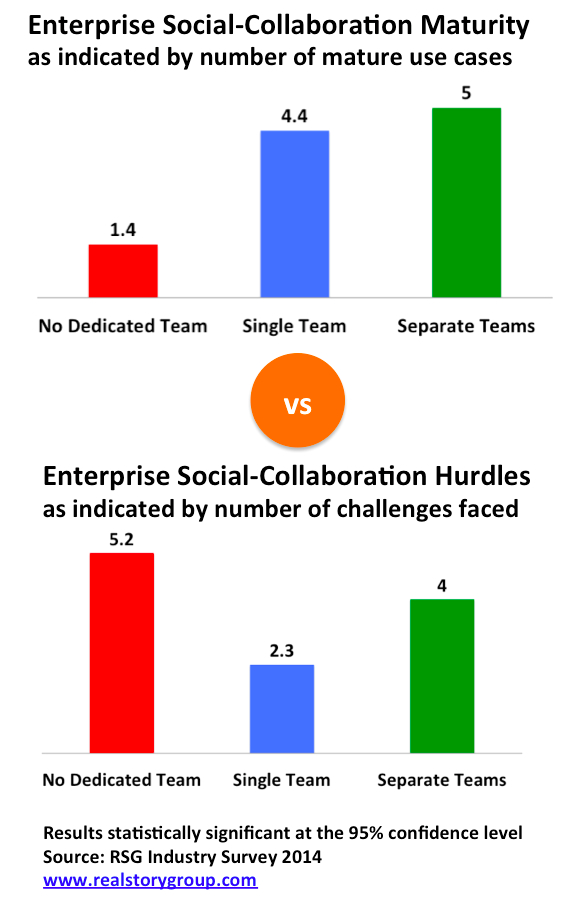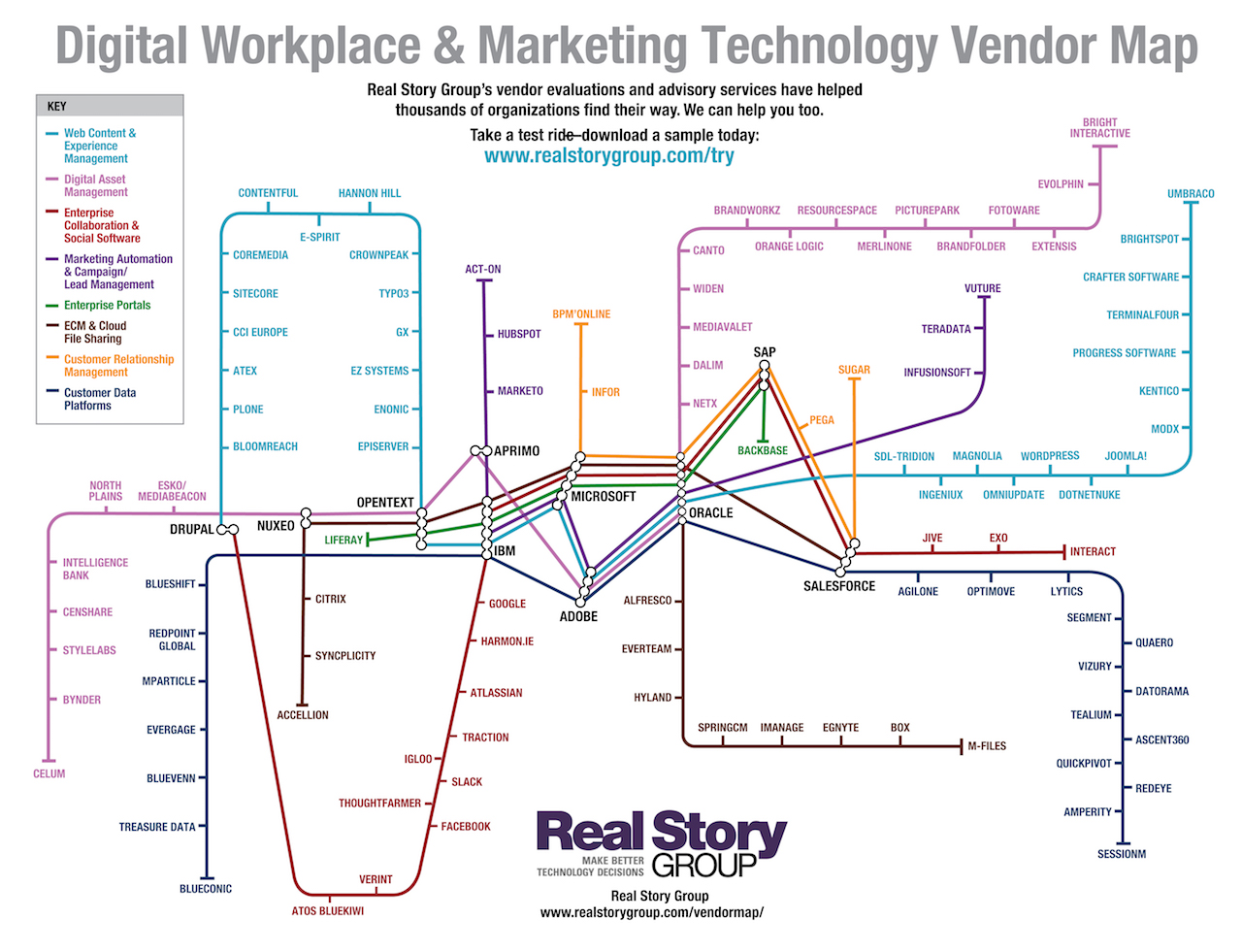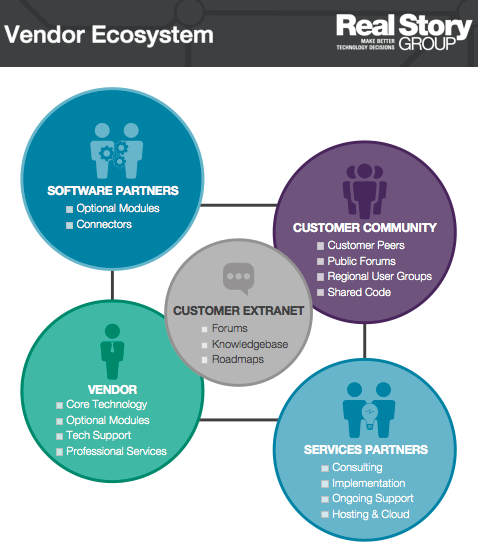Organizational Models and Social-Collaboration Success
RSG conducted an industry survey in Q3/2014 on social-collaboration software usage, where survey respondents included a cross-section of organizations drawn from different industries. (You can get a complimentary copy of the survey results here.) Now we're doing some follow-up analysis of the underlying data.
In a new advisory paper, we turn our attention to analyzing the experiences of large (1,000 to 10,000 employees) and very large (10,000+ employees) organizations with respect to organizational models and attendant effectiveness with social-collaboration technology.
Specifically, we look at the effects of the organizational model on application / use-case maturity, as well as the breadth of challenges enterprises face based on the model they choose. We see two broad models across enterprises
- Traditional intranet teams are also responsible for newer, social software implementation. We call this the "Single Team Model".
- Alternately, the social software team is distinct from the Intranet team. We term this the "Separate Teams Model"
Here's a preview of what we found:

Figure 1: Enterprise Social-Collaboration: Impact of Organizational Model on Maturity versus Program Hurdles
The key implication is that you need to create organizational capabilities to leverage social-collaboration opportunities.
The briefing, available for immediate download for our Collaboration-Social stream subscribers, offers additional charts and in-depth commentary on how you can improve your enterprise social implementations.
If you are not a subscriber, check out your subscription options, and download a sample evaluation chapter.







